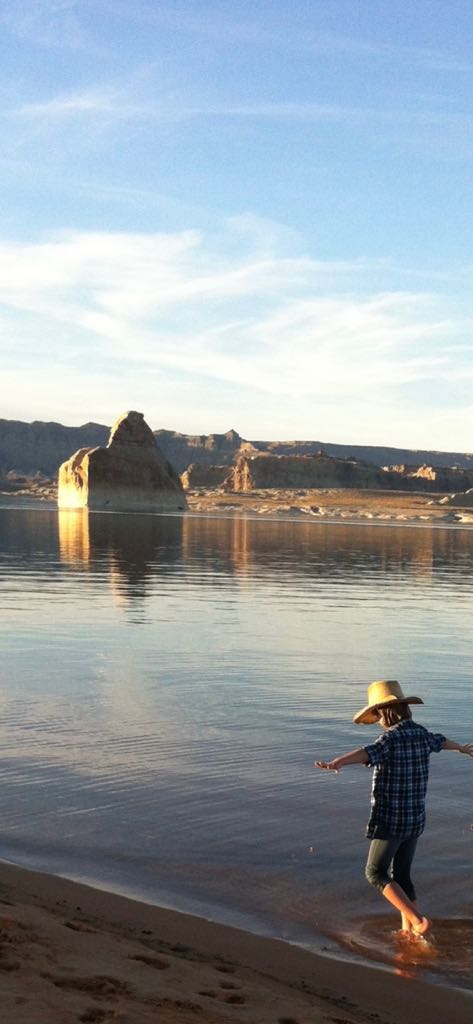Since the turn of the 21st century, the drought across the western United States has eaten up the snowpack and water supply.
Levels at Lake Powell in northern Arizona dipped to an historic low that water managers have been afraid of.
The Colorado River, which Lake Powell flows through, was dammed at Glen Canyon in the early 1960s, allowing for water to be stored and released for irrigation, drinking, and generating electricity. In fact, the water that flows through Glen Canyon Dam produces enough power for three million Americans.
That may change in the next few years.
"It's kind of alarming because it brings to the forefront the drought and the consumption of the water because all this time the Southwest has been growing," said Gus Levy, the Deputy Facility Manager at Glen Canyon Dam.
Back in mid-March of 2022, water levels at Lake Powell dropped to an astounding 3,525 feet. It's the lowest the lake has been since it was filled back in the 1960s.
The drastic drop can be seen from space, too. NASA imagery shows the difference in water storage at Lake Powell in 2017 compared to 2021.


The view from the ground is even more dire.
Lone Rock, an iconic landmark at Lake Powell, is normally surrounded by water, meaning lake goers would need to swim, jet-ski, or boat to get to it.
Now, people can simply walk to it.


With levels this low, the Bureau of Reclamation and states in the Upper Colorado River Basin, will implement drought response operations to keep it from dropping further.
No matter how low the lake level drops, Levy says they're required to send a certain amount of water down the river due to longstanding agreements, laws, and decrees made decades ago.
"What we can do is manipulate that water as far as how much we're sending now versus later, to use to our advantage to maintain the elevation where we can still make power," Levy stated.
Even with those plans in place, there's nearly a one-in-four chance that in 2023, lake levels may drop to 3,490 feet, or "minimum power pool."
If that happens, Levy says Glen Canyon Dam would no longer be able to generate electricity.
"If we're not supplying that power, it's going to be purchased on the "spot market," which would be a more expensive price than what's currently being sold," he added.
The economic cost is only part of the bigger picture. 70% of water that flows through Glen Canyon Dam is dedicated to agriculture.
"It's huge, you know. It trickles on down the line," Levy stated.
Water woes cause trouble for tourists
The northern Arizona community of Page welcomes millions of tourists every year, acting as a gateway to the wonders that make up the Grand Circle, including Horseshoe Bend, Antelope Canyon, and Lake Powell.

With water levels receding to record low levels, businesses are concerned that travelers may bypass the area, just as the city's economy recovers from the pandemic.
“We can take really good care of you when you come to Page and Lake Powell," says General Manager Amanda Swinton of Grand Circle Grille.
For more than two years, she's been serving burgers and beverages for locals and the many tourists that visit the area, saying the restaurant is her "living room."
That's the sentiment shared by many businesses in Page. The city is seeing more tourists than it had in the past two years because of COVID.
According to the Arizona Department of Tourism, "visitor spending" dropped in Coconino County by more than 40% in 2020, especially with fewer international travelers.
It came at the worst time for Swinton since she and her husband opened the restaurant in December of 2019. Grand Circle Grille, however, weathered the storm thanks to local support.
Just as her business is getting back on its feet, the issue with Lake Powell may bring another challenge.
"It is concerning. I grew up here and I've never seen the lake at this low of a level," Swinton says.

Lower lake levels could mean fewer boats and swimmers, hurting the bottom line for Page businesses.
That being said, Swinton says the Grand Circle still has grand things to offer.
"There's so many great local restaurants, tour companies, and kayak companies. Everybody's so ready to serve tourism," she says.







